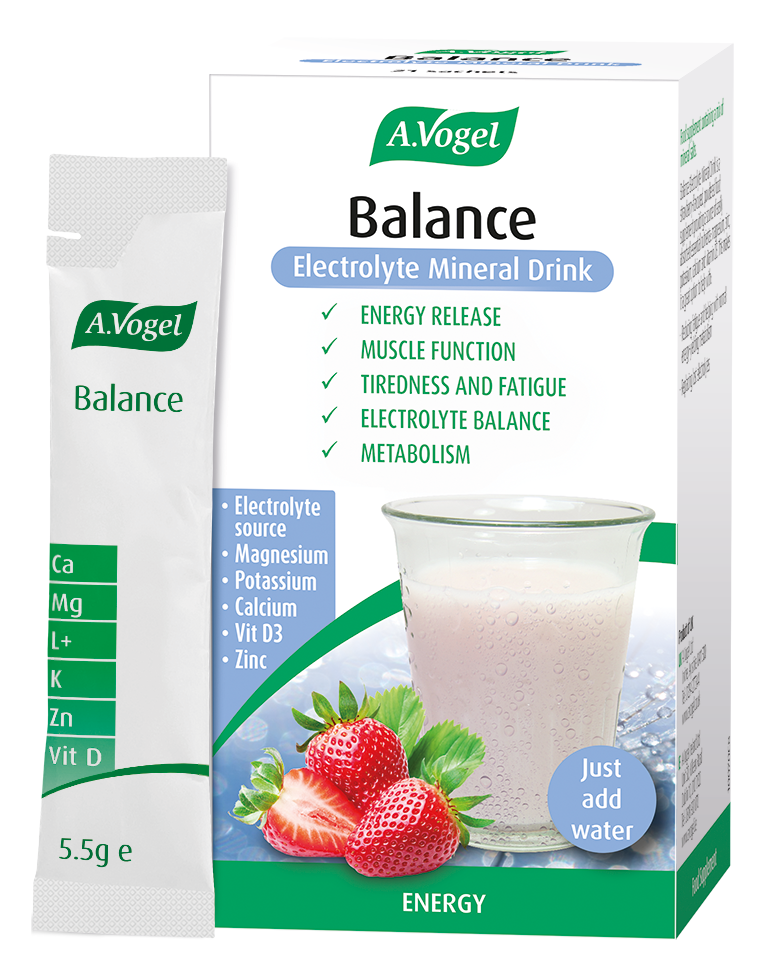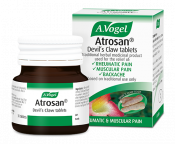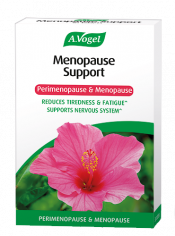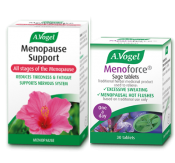Eileen talks about: Joint pain
Can menopause cause joint pain?
While aches and pains and joint stiffness are all inevitable as we age, as women approach menopause, typically between the age of 45 and 55, many are often surprised to discover that joint pain is one of the most common symptoms, alongside hot flushes, night sweats, period changes and mood swings.
The average age for menopause is between 45 and 55, so it is little wonder why many women put their aches and pains down to aging.
Joints which are involved in high impact movements such as the hips and knees tend to be most affected. The elbows, neck, shoulders, hands and fingers can also be affected by joint pain.
There are a number of causes of joint pain during menopause including:
- Hormonal changes
- Dehydration
- Stress
- Weight gain
- Diet
- Poor posture
- Increased sensitivity to pain.
Below, I take a closer look at each of these causes and recommend ways to help prevent and treat joint pain during menopause.
Hormonal changes
Falling oestrogen levels are thought to be one of the main causes of joint pain during menopause. As you reach menopause, levels of oestrogen in your body begin to drop. Oestrogen is responsible for regulating fluid levels in the body; therefore, if levels of this hormone are low, the body becomes less able to hold water, which can affect the hydration and lubrication of the joint tissues, including the cartilage, ligaments and tendons.
Up to 80% of cartilage is water,1 making it a very important component of this flexible and protective tissue, which acts as a cushion between the bones, absorbing shock and easing friction. Water is also a natural part of synovial fluid, a gel-like liquid which lubricates the cartilage and helps the joints move without creating friction.
Water is also needed to help support the flexibility and elasticity of the ligaments and tendons. Ligaments connect one bone to another and are needed for joint stability, while tendons connect your muscles to the bones. When your ligaments and tendons lose their elasticity, your range and ease of movement can be reduced.
Therefore, without enough water, the flexibility and lubrication of the joint tissues can all be affected. When this protective and supportive nature is impaired, it can cause aches, pains and stiffness to develop.
Fluctuating oestrogen levels may also give rise to underlying, low-grade inflammation as a result of the effects it has on the functions of joints, which could also be a factor in menopause joint pain.
Dehydration
Not drinking enough water and excessive sweating during menopause can also contribute to dehydration at this time. If you find that you experience joint pain and stiffness more in the morning, then dehydration during the night could be a contributory factor, especially if you are also experiencing night sweats.
Dehydration can also make it difficult for your kidneys to get rid of excess uric acid, which can cause a build-up of tiny, sharp crystals in and around joints, making them inflamed and sore.
This is identified as gout, a type of arthritis which affects joints towards the ends of the limbs, such as your toes and fingers.
Stress
Stress, surprisingly, can have a negative effect on your joint health. If you are experiencing a lot of stress, your body will release high quantities of the hormone cortisol. This hormone works as an inflammatory agent when present long-term, and so high levels of stress during the menopause will only make your joint pain worse.
Stress can also cause our muscles to tense up; this tension causes our joints to work so much harder which can lead to further inflammation and discomfort. It is important if you tend to experience stress to take time to relax every day.
Weight gain
Excess weight puts additional pressure on weight-bearing joints such as the knees and hips. According to Arthritis.org, every pound of excess weight exerts about 4 pounds of extra pressure on the knees.2
Unfortunately, weight gain is an all too common problem during menopause. Falling oestrogen levels can cause a problem with carbohydrate metabolism in some women, making it very easy to put on weight. Stress and lack of activity throughout the menopause can also cause weight gain.
Losing even just few pounds can help take the pressure off your joints, improving mobility and relieving pain.
Diet
Carbohydrates aren't the only foods that can be a problem during menopause; there are many foods which can actually trigger joint pain.
Sugary foods, high-salt and processed food, as well as caffeine, fizzy drinks, and dairy can all trigger inflammation in the joints and aggravate joint pain.
There is also some debate about whether or not certain vegetables, known as the nightshade vegetables could exacerbate joint pain. Our muscles and joints advisor Earle Logan goes into more detail about this in his article 'Foods that make muscle and joint pain worse.' Sometimes just cutting out these trigger foods can make a huge difference.
Poor posture
Slouching puts extra pressure on your joints. It limits your range of motion and makes it so much harder for your muscles to take the load off your joints and, in time, it can cause misalignment of the spine which eventually leads to even more joint stress and pain.
When experiencing pain, you are also more inclined to hold yourself differently, repositioning your body to take pressure off the painful area, but this is likely to put added pressure on other areas.
Also, if your joints, ligaments and tendons are affected, this can alter your whole posture, pulling on your muscles and causing both joint and muscle aches at the same time.
Increased sensitivity to pain
Sleeping poorly is notorious during menopause and research has proved that sleep deprivation increases our sensitivity to pain: a study from the University of California found that sleep deprivation can change the circuitry in the brain in ways that amplify pain.3
Low magnesium can also impact your pain perception,4 as well as causing sleeping problems. Poor levels of this essential nutrient are very common during menopause due to stress and digestive weakness.
Magnesium is also needed to keep your muscles relaxed, so low levels can cause them to tense up and become tight and stiff, which can impact the muscles that the control movement of the joints.
What does menopause joint pain feel like?
Any of your joints can be affected, from little joints such as fingers and toes, right up to the major joints such as hips and knees.
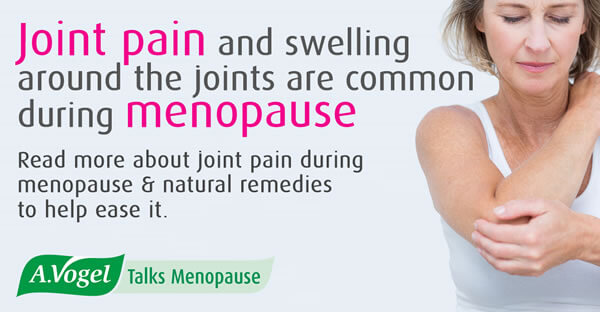
Feeling achy, stiff and creaky and sometimes experiencing a burning feeling around the joints are typical symptoms of menopausal joint pain. These may be worse in the morning, improving as the day continues. While pain can be localised to individual joints or a few joints, many women also describe a feeling of aching all over.
This is a bit of an unusual and surprising one but women have also reported instances where old injuries from childhood or more recently have been known to ache again. For example, a previously broken wrist feeling tender again or whiplash from a mild car crash 5 years ago returning.
So if a specific area is feeling tender, it is worthwhile thinking back to previous injuries or any instances of mild trauma which might have occurred to that area.
How to treat menopause joint pain naturally
There are lots of simple and natural things you can do to help ease the discomfort of menopausal joint pain and to support your joint health. You should:
Drink plenty of water
Since dehydration can have such a negative impact on your joints, one of the first things you should do if you experience joint pain is to make sure you are drinking enough water. You should be looking to drink around 1.5-2 litres of plain water (not artificially flavoured or sweetened) every day, over and above other drinks, such as coffee and tea.
If your joints are sore or creaky first thing then ease off as the day goes on, it may mean that you are really dehydrated during the night, so make sure that you drink a small glass of plain water about an hour before bed – this is really important if you are getting night sweats as these will dehydrate you further.
Strengthen your muscles & joints
While exercising is probably the last thing you want to do when your joints feel achy and sore, staying active is very important as it helps to increase the strength and flexibility of your joints, as well as in the muscles that surround the joints. But this doesn't mean you have to spend hours in the gym!
Good options include:
- Non weight-bearing exercises (swimming, water aerobics and cycling)
- Low-impact weight-bearing exercises (walking, low-impact aerobics and dancing)
- Resistant, non-impact exercises (Pilates and yoga).
Weight-bearing exercises are thought to help protect our bone mineral density as we age and can also help build muscle, which takes the pressure off your joints.
Try to focus on strengthening the muscles around the hip and knee joints as these are the joints that need to support your entire body weight.
It is also important to always warm-up before any exercise. Our Muscles and Joints advisor Earle Logan has a simple warm-up routine for any type of exercise which you can try.
Also, be aware, high impact exercises such as jogging on hard roads can exacerbate joint pain, although this is often eased with rest or with the use of compression stockings. It's best to limit exercises which involve lots of pounding on your joints such as running and jumping.
In contrast, low-impact non-weight bearing exercise can be gentler on the joints but still help to build strength and increase the range of movements. Therefore, incorporating flexibility and non-impact, stretch work into your exercise plans is also a good option.
Gentle stretching is great for maintaining mobility and movement. The cat-cow pose is a good example of a gentle pose which can help to improve the flexibility of the spine and stretch out tension, stiffness and discomfort in the back.
As an added bonus these gentler movements which you can also incorporate controlled breathing techniques with, can also help to promote relaxation and manage stress.
You can find more gentle stretch exercises like this to help improve flexibility on our Get Active hub.
Eat foods that can help to ease joint pain
Your diet is really important when it comes to your joints because what you eat can impact how your joints feel. While some foods can trigger joint pain or make it worse, others can have a positive influence on your joint health.
Reducing inflammation is a key part of reducing joint pain and improving overall joint health.
Some of the most beneficial anti-inflammatory foods include:
- Omega-3-rich foods – these contain oils which have a positive effect on inflammation – examples include oily fish such as herring, mackerel, sardines, salmon and tuna. Walnuts, almonds, chia seeds and soybeans are also rich in omega-3 fatty acid.
- Antioxidant-rich foods – chemicals called anthocyanins are powerful antioxidants that help reduce inflammation. You can find them in brightly coloured fruit and vegetables such as cherries, raspberries, blueberries and broccoli.
- Other anti-inflammatory foods - Many fruit and vegetables have properties which reduce inflammation so try and keep to a healthy diet with lots of fresh food such as pineapple, apples, avocados and mushrooms. Other foods which can help include virgin olive oil, coconut oil, dark chocolate and spices such as ginger.
Heat it up or cool it down
Not sure whether to use heat or ice for your joint pain? Both are inexpensive and easy ways to ease pain but help in different ways.
Heat, such as heating pads or warm baths, tends to work best for stiffness. It can help improve the flexibility of tendons and ligaments which can ease stiff joints, as well as relax and soothe tired muscles.
Cold therapies such as ice packs can help to numb nerve endings, dulling pain and restricting blood vessels, slowing circulation and reducing swelling.
Try alternative treatments/therapies
Alternative treatments such as massage or acupuncture help many women with their joint pain symptoms. They directly target the area of pain in order to ease the symptom.
Acupuncture can not only help relieve pain, but it can also be really good for balancing your hormones in the menopause.
A small study published in the online journal BMJ Open highlighted the benefits of this alternative therapy, suggesting that a brief course of acupuncture may help to ease troublesome menopause symptoms. The researchers concluded that acupuncture offers "a realistic" treatment option for women who can't, or don't want to, use hormone replacement therapy (HRT).5
You may want to consider getting a check-up with a Chiropractor or Osteopath, as they can detect if any joints are out of line and also recommend exercises to help.
Correct your posture
The Alexander Technique can teach you how to hold your posture correctly and can be very effective at alleviating joint pain.
The best supplements for menopause joint pain
There are a number of supplements which can be beneficial in easing joint pain and supporting your joint health, such as vitamins, minerals and herbal remedies.
These include:
Magnesium & calcium
Calcium is particularly important as it keeps your bones strong and healthy. During menopause, as oestrogen starts to decline, bone density can fall with it, which can lead to conditions such as osteoporosis. This can make the bones more fragile and prone to breakages.
The mineral magnesium is just as important. Magnesium is needed for calcium to be absorbed into your bloodstream effectively. Therefore, if you are low in magnesium, calcium can find it difficult to get to the bones. Without sufficient magnesium, calcium may be dumped as painful crystals in and around the joints. Taking a supplement which contains both of these vital joint minerals is therefore recommended.
Research also shows that a magnesium deficiency can contribute to inflammation which will likely lead to pain and discomfort in the joints and in other areas of the body.6
Vitamin D
A vitamin D deficiency can also lead to weakness in the bones, as well as joint pain. It maintains calcium and phosphorus levels and, in doing so, keeps the bones healthy.
Exposure to sunlight is the best way to get vitamin D. When sunlight hits the skin, it manufactures the vitamin D that we need on a daily basis. However, because the sun isn't strong enough for the body to make vitamin D during autumn and winter, you need to look at other sources such as diet, by eating foods rich in vitamin D and supplements.
The NHS recommends that, since it's difficult for people to get enough vitamin D from food alone, everyone should consider taking a daily supplement containing 10 micrograms (400 iu) of vitamin D during the autumn and winter.7
It's very important not to go over this dose unless your doctor has checked your vitamin D levels, and you have been recommended to take a higher dose.
A.Vogel Balance Electrolyte Mineral Drink with Vitamin D3, Magnesium, Zinc, Potassium and Calcium.
£22.49 (21 x 5.5g sachets) In Stock
Omega-3
A good source of omega-3 is oily fish such as herring, mackerel, sardines and salmon. If you don't eat fish regularly, though, you might want to consider taking a fish oil supplement.
If you are vegetarian or vegan, a flaxseed oil supplement would be the next best thing.
Soy isoflavones
Taking a plant-based oestrogen supplement such as soy isoflavones, which can be found in our Menopause Support tablets, can help to reduce some of the impact of oestrogen loss. This reduction in oestrogen can lead to joint pain, as well as other menopause symptoms such as low mood, tiredness and fatigue.
Devil's Claw
Devil's Claw is the common name for a type of plant called Harpagophytum procumbens that is native to the Kalahari Desert in Southern Africa. The root of the Devil's Claw plant is commonly used to treat muscle and joint pain, rheumatism and backache due to its natural anti-inflammatory properties.
Since conventional anti-inflammatory medication is frequently associated with side effects such as digestive problems and stomach ulcers, Devil's Claw is a good option as it can reduce inflammatory pain without these side effects. The herb is gentle to the body and has an accumulative effect which can take up to 4 weeks to work.
Arnica
Arnica is one of the most well-known traditional remedies for relieving aches, pains, stiffness, sprains and bruising.
Our Atrogel Arnica Gel is a natural herbal remedy which is made using extracts of fresh arnica flowers, formulated into a non-greasy gel that's quick and simple to apply directly to the source of your pain. It works very well on smaller joints such as your wrists, elbows and fingers for swift pain relief.
Nettle
If your joints feel a bit 'creaky', especially first thing in the morning, then you may find that drinking a couple of cups of nettle tea or a few doses of nettle tincture daily can be of benefit. Nettle is also a great herb for joint inflammation and itchy skin, and acts as a cleanser - so it's worth taking every day for all these benefits.
Glucosamine
This is a good supplement to begin taking at the start of the menopause as a preventative measure because it can help reduce deterioration of joint tissues which may then mean that you avoid joint pain later on. It can help sustain and retain your cartilage and the fluid surrounding joints.
For best effects, it is recommended to take a dose of at least 1500mg daily. This could help to prevent other joint conditions from developing, such as osteoarthritis.
Conventional treatments for joint pain
Conventional medicines for joint pain include painkillers and anti-inflammatories. However, they are not usually recommended for joint pain associated with the menopause as the pain is a symptom rather than the cause itself.
To treat menopausal joint pain, your doctor may consider the use of hormone replacement therapy (HRT). Although research suggests HRT may help relieve some of the symptoms of menopause joint pain initially8, there are some concerns these effects may not be long-lived.
When should you consult your doctor?
It's important to get your symptoms checked by your doctor; this will make sure that menopause is at the root of your joint pain and not something else such as arthritis and osteoporosis.
If your pain is severe, and lifestyle and diet changes, supplements and alternative therapies are ineffective, then there may be another underlying cause. In this case, or if you are worried about your condition, it is important to talk to your doctor as they will be able to prescribe a treatment to help you.
Does menopause joint pain go away?
Most women do find that symptoms such as joint pain begin to ease off through the menopause as hormone levels even out and stabilise.
However, this can also depend on your general health, stress levels, diet, exercise etc. So looking after yourself well at this time is very important.
Is menopause joint pain the same as arthritis?
There are two main arthritic conditions: osteoarthritis and rheumatoid arthritis, and the onset of both of these conditions can coincide with menopause.
Osteoarthritis is a chronic (long-term) condition also known as 'wear and tear' arthritis. It typically starts with one or two joints, and the large weight-bearing ones such as the hips and knees are usually the first to become painful as the proactive cartilage wears away and is not replaced as fast as it is worn away.
Wear and tear is a natural part of ageing so most people will experience this to some degree. However, cartilage degeneration can be exacerbated or caused by other factors such as our genes, multiple pregnancies, poor diet, obesity, injury and overuse. For example, this tends to be the case for athletes such as runners who are over-using weight-bearing joints, or for those whose jobs involve repetitive bending, heavy lifting and standing for long periods of time.
Osteoarthritis can be confused with menopause joint pain, due to it commonly occurring as people reach midlife, the same time that women are often starting to go through menopause. While joints can become less lubricated and flexible during menopause, often, as your hormones begin to balance out after menopause, your joint pain can begin to lessen. In osteoarthritis, the cartilage breaks down, causing pain, swelling and problems moving the joint, which can worsen overtime.
Osteoarthritis can be diagnosed by an x-ray which can show damage and other changes to the cartilage and joint tissues; whereas menopausal joint pain doesn't cause the cartilage to breakdown and deteriorate in this way, therefore it wouldn't show up on an x-ray.
While osteoarthritis typically occurs in older people due to wear and tear over the years, in contrast, rheumatoid arthritis is an autoimmune disease where the immune system starts to attack the tissues surrounding the joints.
This condition can be detected by a blood test and is usually episodic in nature, characterised by flare-ups of inflammation and pain and periods where symptoms are diminished. The joints of the hands and feet are most commonly affected, but other joints may be involved in severe cases.
Researchers have investigated the link between menopause and rheumatoid arthritis and found that menopausal women's arthritis symptoms get worse, faster.9
In another study, researchers also found that women who go through early menopause are more likely to develop rheumatoid arthritis compared to those who experience normal to late menopause. The study also found that hormonal changes may influence pathways, leading to a mild type of rheumatoid arthritis.10
Case study: How drinking more water can make a big difference!
Who doesn't love a success story? I was so pleased with this one, I had to share it...
Since dehydration can have such a big impact on your joints, one of the first things I often recommend to menopausal woman who are feeling achy and sore is to drink more water. This is exactly what happened when Margaret (56) asked my advice on joint pain during menopause.
Find out how drinking more water helped Margaret and try it yourself to see if it helps you.
Other aches and pains during menopause
While joint pain is one of the most common pains during menopause, there are many other menopause symptoms which can make your body feel achy and sore.
Other pains during menopause include:
- Headaches
- Period pain
- Sore breasts
- Pain during intercourse
- Bladder infections.
There are also a few unexpected aches and pains which some women can experience during menopause such as dental pain, sinus pain and chronic pain conditions getting worse.
References
1. https://www.ncbi.nlm.nih.gov/pmc/articles/PMC5585083/
2. https://www.arthritis.org/living-with-arthritis/comorbidities/obesity-arthritis/fat-and-arthritis.php
3. https://www.jneurosci.org/content/39/12/2291
4. https://www.ncbi.nlm.nih.gov/books/NBK507245/
5. https://www.bmj.com/company/newsroom/acupuncture-may-ease-troublesome-menopausal-symptoms/
6. https://www.ncbi.nlm.nih.gov/pmc/articles/PMC5783146/
7. https://www.nhs.uk/conditions/vitamins-and-minerals/vitamin-d/
8. https://www.ncbi.nlm.nih.gov/pubmed/20537472
9. https://academic.oup.com/rheumatology/article/57/5/798/4810410
10. https://www.ncbi.nlm.nih.gov/pmc/articles/PMC3580586/





